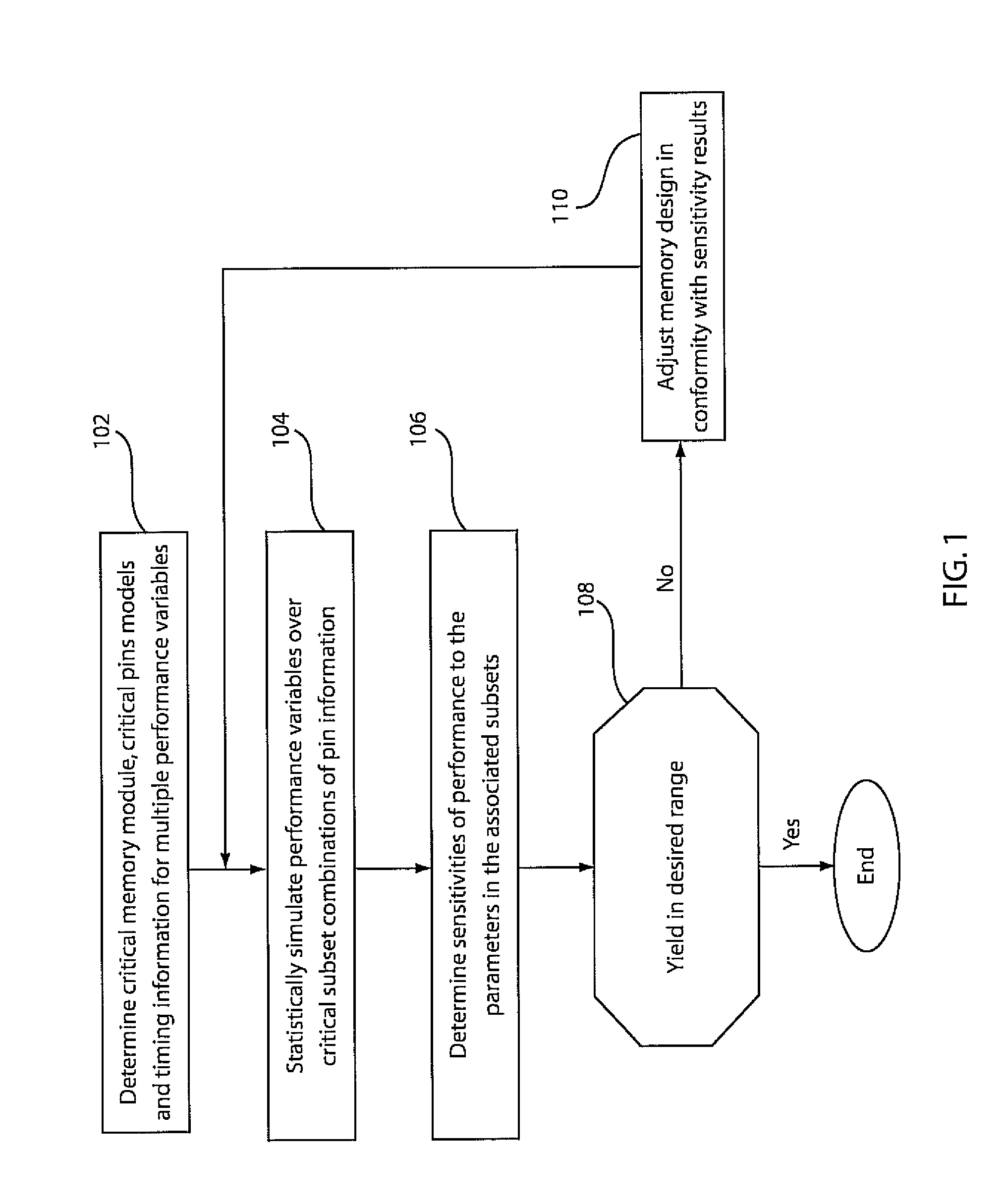In-situ design method and system for improved memory yield
a design method and memory technology, applied in the field of adaptive design methods and systems, can solve the problems of memory failure, memory speed and other performance factors form critical limitations of today's processing systems, affecting the overall chip yield, etc., and achieve the effect of fast rare failure probability estimation
- Summary
- Abstract
- Description
- Claims
- Application Information
AI Technical Summary
Benefits of technology
Problems solved by technology
Method used
Image
Examples
Embodiment Construction
[0024]The present principles provide an efficient method, system and computer implementation for modeling and improving memory yield and performance across process variations and environmental conditions. The modeling, in this example, takes into consideration both array and peripheral circuitry. This provides a mechanism for raising the performance of memory arrays beyond present levels / yields while accommodating the fact that a memory array is an inseparable entity from its surrounding circuitry, and that there is a need to capture the impact of design decisions on the memory module. The present principles provide significant savings at runtime.
[0025]Embodiments of the present invention can take the form of an entirely hardware embodiment, an entirely software embodiment or an embodiment including both hardware and software elements. In a preferred embodiment, the present invention is implemented in software, which includes but is not limited to firmware, resident software, microc...
PUM
 Login to View More
Login to View More Abstract
Description
Claims
Application Information
 Login to View More
Login to View More - R&D
- Intellectual Property
- Life Sciences
- Materials
- Tech Scout
- Unparalleled Data Quality
- Higher Quality Content
- 60% Fewer Hallucinations
Browse by: Latest US Patents, China's latest patents, Technical Efficacy Thesaurus, Application Domain, Technology Topic, Popular Technical Reports.
© 2025 PatSnap. All rights reserved.Legal|Privacy policy|Modern Slavery Act Transparency Statement|Sitemap|About US| Contact US: help@patsnap.com



